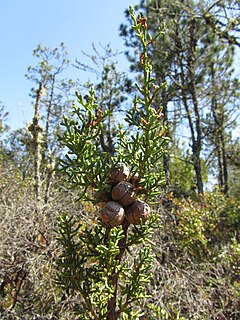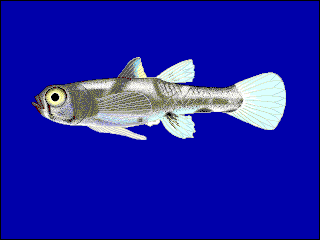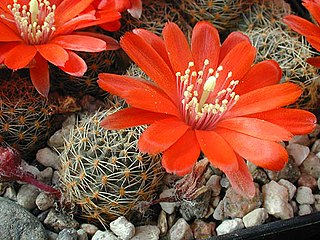Related Research Articles

The genus Spilogale includes all skunks commonly known as spotted skunks and is composed of four extant species: S. gracilis, S. putorius, S. pygmaea, and S. angustifrons.

The pygmy marmoset, genus Cebuella, is a small genus of New World monkey native to rainforests of the western Amazon Basin in South America. It is notable for being the smallest monkey and one of the smallest primates in the world, at just over 100 grams (3.5 oz). It is generally found in evergreen and river-edge forests and is a gum-feeding specialist, or a gummivore.

The pygmy nuthatch is a tiny songbird, about 10 cm (4 inches) long and about 10 grams in weight.

Cupressus goveniana, now reclassified as Hesperocyparis goveniana, with the common names Californian cypress and Gowen cypress, is a species of cypress, that is endemic to California.

Cupressus pigmaea, the Mendocino cypress or pygmy cypress, is a taxon of disputed status in the genus Cupressus endemic to certain coastal terraces and coastal mountain ranges of Mendocino and Sonoma Counties in northwestern California. It is a highly variable tree, and closely related to Cupressus goveniana, enough to sometimes be considered a subspecies of it.

The whiskered auklet is a small seabird of the auk family. It has a more restricted range than other members of its genus, Aethia, living only around the Aleutian Islands and on some islands off Siberia, and breeding on these islands. It is one of the smallest alcids, only the closely related least auklet being smaller. Its name is derived from the long white feathers on its face that are part of its breeding plumage.
The Chinese Elm cultivar Ulmus parvifolia 'Hokkaido' is an older cultivar of Japanese origin.

The Ballantine scale is a biologically defined scale for measuring the degree of exposure level of wave action on a rocky shore. Devised in 1961 by W. J. Ballantine, then at the zoology department of Queen Mary College, London, the scale is based on the observation that where shoreline species are concerned "Different species growing on rocky shores require different degrees of protection from certain aspects of the physical environment, of which wave action is often the most important." The species present in the littoral zone therefore indicate the degree of the shore's exposure.

The dwarf pygmy goby or Philippine goby is a tropical species of fish in the subfamily Gobionellinae from brackish water and mangrove areas in Southeast Asia. It is one of the smallest fish species in the world. Males reach maturity at a standard length of 0.9 cm (0.35 in) and can reach up to 1.1 cm (0.43 in) in standard length, while the females can grow up to 1.5 centimetres (0.59 in) in total length. Adults weigh around 4 milligrams (0.00015 oz). It is known as bia and tabios in the Philippines.

Stumpffia pygmaea is a species of frog in the family Microhylidae. It is endemic to Madagascar, where it is known from only two islands, Nosy Be and Nosy Komba. Its natural habitats are subtropical or tropical moist lowland forests, plantations.

The pygmy spotted skunk is a species of mammal in the family Mephitidae. It is endemic to Mexico.

The pygmy rainbowfish is a species of rainbowfish in the subfamily Melanotaeniinae. It is endemic to Australia.
Limatula, the file shells or file clams, is a genus of marine bivalve molluscs in the family Limidae.

Pterolophia is a genus of longhorn beetles of the subfamily Lamiinae, containing the following species:

Agriocnemis pygmaea is a species of damselfly in the family Coenagrionidae. It is also known as wandering midget, pygmy dartlet or wandering wisp. It is well distributed across Asia and parts of Australia.

Askellia pygmaea is a species of Asian and North American plants in the dandelion tribe within the sunflower family. It is native to western, northern, and eastern Canada, the western United States, Russia, Mongolia, Kazakhstan, and western China.
Pterolophia guineensis is a species of beetle in the family Cerambycidae. It was described by James Thomson in 1864, originally under the genus Alyattes.

The western pygmy marmoset is a marmoset species, a very small New World monkey found in the northwestern Amazon Rainforest in Brazil, Colombia, Ecuador, and Peru. It was formerly regarded as conspecific with the similar eastern pygmy marmoset, which has whitish underparts. Although the western pygmy marmoset occurs further west than the eastern pygmy marmoset, the primary separators of their ranges are the Amazon River and Maranon River, with the western occurring to the north of them and the eastern to the south.

Rebutia pygmaea is a species of cactus in the genus Rebutia, native to Bolivia and northwest Argentina. It has gained the Royal Horticultural Society's Award of Garden Merit.
References
- ↑ BioLib.cz - Pterolophia pygmaea. Retrieved on 8 September 2014.